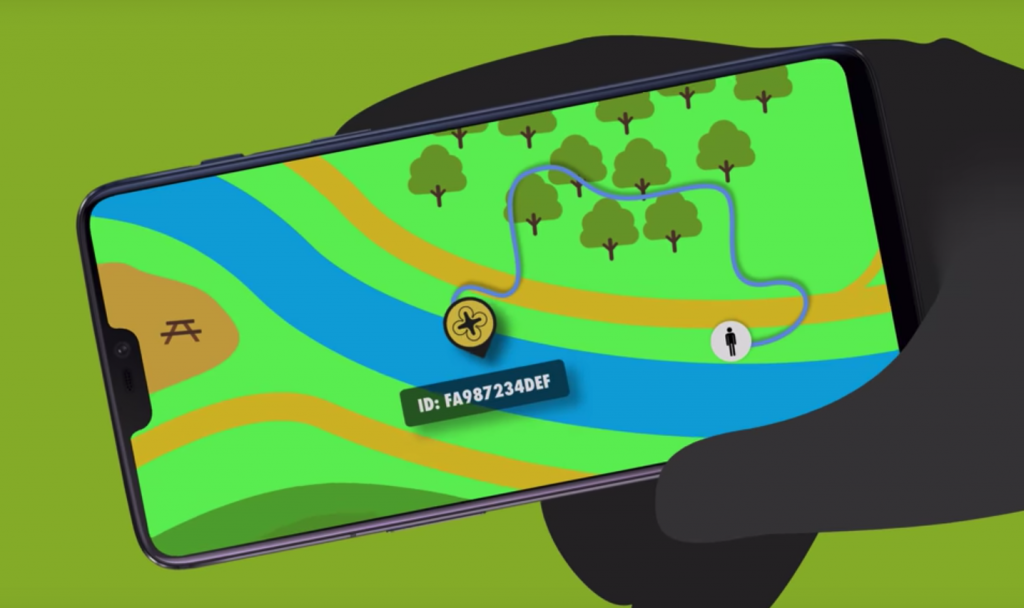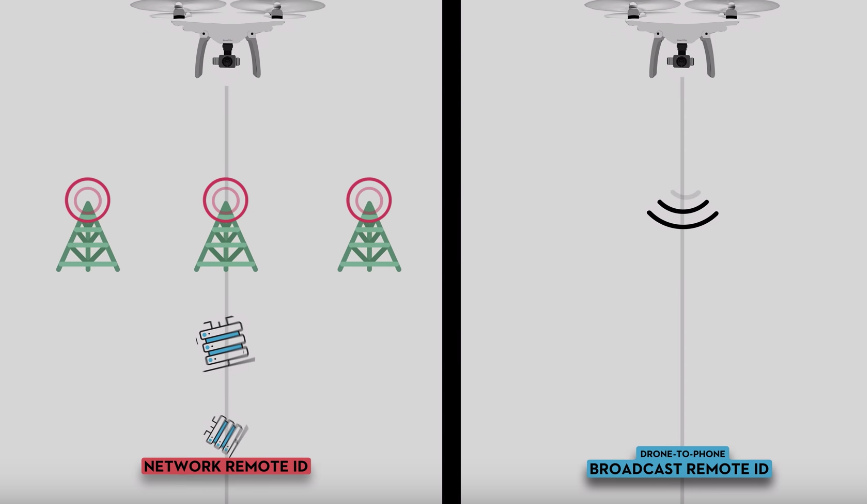DJI Video Showcases Drone-to-Phone Remote ID Alternative as List of Industry Leaders Concerned with FAA’s Remote ID Proposal Continues to Grow
BY Zacc Dukowitz
26 February 2020As the FAA’s proposed rule on Remote ID continues to draw criticism, DJI has released a video demonstrating how their drone-to-phone broadcast system for remotely identifying UAS works.
DJI’s drone-to-phone system works using an app that can be installed on any smartphone. Here is the data that can be transmitted via the app:
- The drone’s unique ID/serial number
- The drone’s altitude
- The drone’s speed
- The done’s direction
- The location of the drone
- The location of the drone pilot
For DJI drones to be configured to share data via the app, all they need is a software update.
Around the world, aviation authorities have said remote ID is the key to allowing more complex drone use, and to solving concerns about safety and security. DJI’s direct drone-to-phone remote ID shows we’re committed to providing a solution in a way that is instantly usable worldwide without any additional infrastructure.
– Brendan Schulman, Vice President of Policy & Legal Affairs at DJI
[There are just five days left to comment on the FAA’s Remote ID NPRM. Get help crafting your comment in our user-friendly guide.]
No Internet Connection Required
One of the big concerns shared by industry stakeholders about the FAA’s current Remote ID proposal is the requirement that drones be configured to transmit information via the internet.
DJI estimates there are thousands of drones currently in use in the U.S., including many made from kits, that don’t have this capability. This means that, if the current Remote ID proposal becomes law, the pilots of those drones will be put in the difficult position of choosing to fly illegally or shelling out for new compliant models.
DJI’s drone-to-phone broadcast solution, on the other hand, does not require the drone to have an internet connection in order to transmit data.
According to DJI, the Wi-Fi Aware signals used by its system to transmit the information listed above can be received from more than one kilometer (.6 miles) away. Because the system does not need to connect to a Wi-Fi base station, a cellular network, or any other external system, it can work in rural areas with no telecom service.
Why DJI Developed a Drone-to-Phone Broadcast Solution
DJI’s drone-to-phone broadcast solution was first demoed last year at the third annual Drone Enable conference of the International Civil Aviation Organization in Montreal, Canada.


At the time of the demo, DJI believed they were unveiling the future of Remote ID for North America.
And with good reason.
It was no secret that the FAA was developing rules for Remote ID, and all signs indicated that its rule would follow the broadcast model DJI has developed.
The month before DJI’s demo in Canada, the Drone Advisory Committee (DAC) announced its recommendations for a voluntary Remote ID compliance program that would incentivize both commercial and recreational operators to take specific steps to enable Remote ID while the FAA worked to finalize its proposal for new Remote ID rules.
One of the primary recommendations from the DAC was that drone operators should “follow the ASTM (American Society for Testing and Materials) Remote ID standard as the basis for the program.”
And the ASTM standard follows—you guessed it—a drone-to-phone broadcasting model.
Here is a quote from the article we wrote about DJI’s drone-to-phone demo in Montreal late last year (the bold is ours):
To ensure compliance with anticipated legal requirements, DJI’s new remote ID system was built to conform with the forthcoming ASTM International standard for broadcast drone remote ID . . . the ASTM standard was developed over 18 months by a large group of stakeholders in the drone industry and in the government, and following it will almost certainly be a requirement when the FAA makes remote ID mandatory.
The article goes on to say:
Other proposed remote ID solutions require pilots to take fairly involved steps, like adding telecommunications equipment to their drone, connecting to a cell tower or buying a data plan, and subscribing to an ID service provider.
These “involved steps” are all required, in some form, in the FAA’s current Remote ID proposal.
FAA’s Own Research Found Broadcast Solution Was the Best Option
In addition to being part of the ASTM standards for Remote ID, a broadcast solution was also determined to be the best approach to Remote ID by the FAA’s own research among drone industry stakeholders.


Here is an excerpt from a DJI article detailing that research (the bold is ours):
In 2016, Congress instructed the FAA to convene industry stakeholders to determine how to accomplish Remote ID based on “consensus standards” . . . the consensus recommendation was for drones flying under existing FAA rules to perform Remote ID via a radio broadcast, with network solutions an optional alternative. The ARC’s many months of work demonstrated how broadcast technologies scored best for inexpensive retrofit, ease of compliance, and performance. Network-based solutions involved the highest costs, burdens, and privacy intrusions.
So Why Did the FAA Choose a Different Solution?
This is the question many in the drone industry have been asking since the FAA first shared its NPRM on Remote ID at the end of 2019.
So far, we haven’t seen a thorough answer. Perhaps the FAA will provide one after it has gone through all of the public comments it receives on the Remote ID NPRM, once the commenting window closes on March 2.
One thing that is notable is how many different drone industry stakeholders have publicly expressed concern about the FAA’s Remote ID proposal.
Here is a short list of just some of the companies and individuals that have made public statements expressing their concern about the proposal:
- Academy of Model Aeronautics (AMA)
- AUVSI*
- Christopher Korody of The Drone Business Center
- Digital Photography Review
- DJI
- Kittyhawk
- UAV Coach
- Wing*
*Kind of—both AUVSI and Wing recently issued statements in which they expressed support for the ASTM standards for Remote ID (which, given the timing, is tantamount to saying you don’t support the FAA’s proposed rules).
The window for making comments on the FAA’s proposed rules for Remote ID closes on March 2. Click here to visit the FAA Register and make a public comment.
If you need help writing your comment check out our in-depth guide to commenting, which includes four major talking points to consider when writing your comment.
Already commented? Share your thoughts and what you commented in this thread on the UAV Coach community forum.


